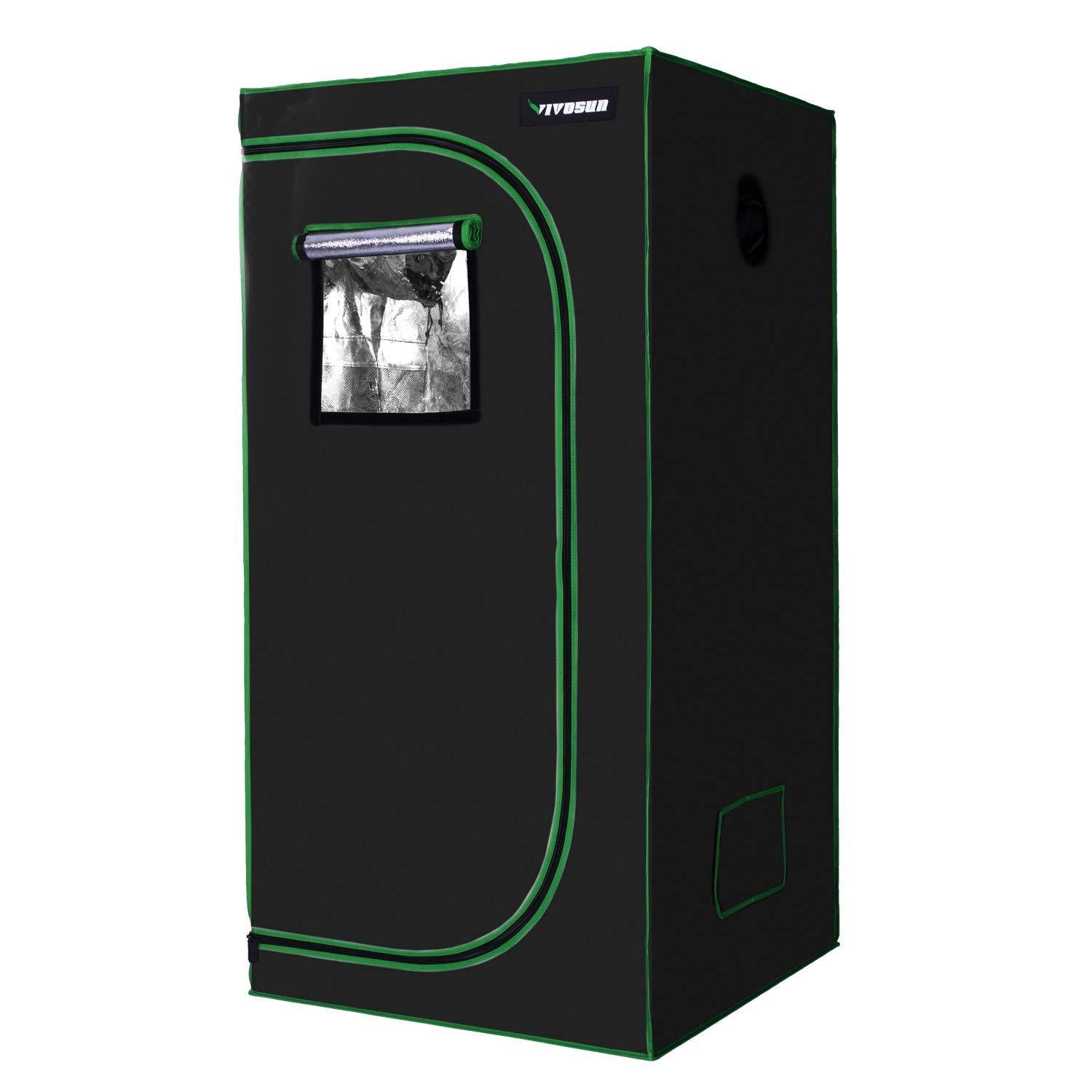Growing cannabis indoors doesn’t have to be difficult. The plant itself grows just like a weed, so it’s a fast growing process. It’s the setup itself that can take some time. For the best cultivation conditions, the goal is to mimic natural sunlight indoors. The benefit of setting up the perfect grow conditions indoors is that you can grow year round, so you’re not dependant on the season and weather. Luckily, beginners today have the option of buying a grow tent to set up the perfect indoor growing conditions.
What is a Grow Tent?
At their most basic, grow tents are fabric that is wrapped around a frame made of metal poles. The fabric is coated with a reflective material on the inside, so as much light as possible is used by your plants.
Marijuana Grow tents differ from grow boxes in that they’re versatile and easy to transport, while grow boxes are often heavy, but less fragile. These days, almost everyone but serious commercial hydroponic growers use grow tents instead of custom grow boxes or grow rooms.
Why You Should Use a Grow Tent?
Maximize Your Cannabis Grow Lights – A grow tent will typically has reflective walls which are better than what you can do yourself.
Designed for Common Grow Equipment – It is fairly easy to adjust and hang grow lights, find ports and vents, hook up your fan. A grow tent accounts for most of the growing situations creating the ideal environment for plants to thrive.
Light Proof – A grow tent is made in such a way that light does not leak in and out of the tent. This not helps with faster growth bit as prevents light from spilling out. DIY light proofing can be cumbersome and a grow tent eliminates that problem.
Vivosun Mylar Hydroponic 36”x36”x72” Grow Tent

Vivosun is a well-reputed company in the market, and as such the 3×3 grow tent has spectacular quality. The fabric density is 600D thus entirely light and waterproof.
95 % of the interior is constructed out of reflective material, thus it reflects about all light within the grow-tent thus improving the effectiveness of your grow lights. The tents are long-lasting due to frame that has metal poles and connectors.
The door of the tent has a smooth zipper, it has windows that let you observe the plants without moving the environment. No tools are needed to assemble the tent. It also comes with a 2-year warranty and weighs 22lbs.
Apollo Horticulture 48”x24”x60” Grow Tent

This Apollo Horticulture grow tent does not seem to disappoint in any aspect. This 3×3 grow tent delivers a great cover over your plants. You can be confident they will blossom.
We have yet another Apollo horticulture tent. This tent is similar to the one above in all aspects except the size. This tent is a bit smaller than the one above.
Features
- The tent measures 48*24*60 inches
- It has reflective interior
- It is 100% lightproof
Eco Farm 2*2FT(24*24inch) Grow Tent

Another grow tent that is inexpensive and is a great value for money, the ECO Farm D-Door grow tent has a sturdy tubular metal frame.
The tubular metal frame with metal push lock corners calls for easy tool free assembly. The poles have a diameter of 6mm. The metal frame comes with three additional heavy duty support bars and four metal rings to hang lights and other equipments.
The outer oxford canvas material has a thickness of 600D and has an inner reflecting mylar lining which has a 95% reflectivity. This may be matter of concern to some who are accustomed to a 100% reflective inner lining. It has a large D-shaped door with an attached hook that holds the door open while you work. USE CODE SALE25 to get EXTRA 25% OFF now!
The Conclusion
Consider all the critical factors before you get yourself into the actual purchasing step. Do your research to avoid any inconvenience. Know your priorities and get going with your gardening skills. We hope that our guide help you make the right purchase that meet your needs without breaking the bank.